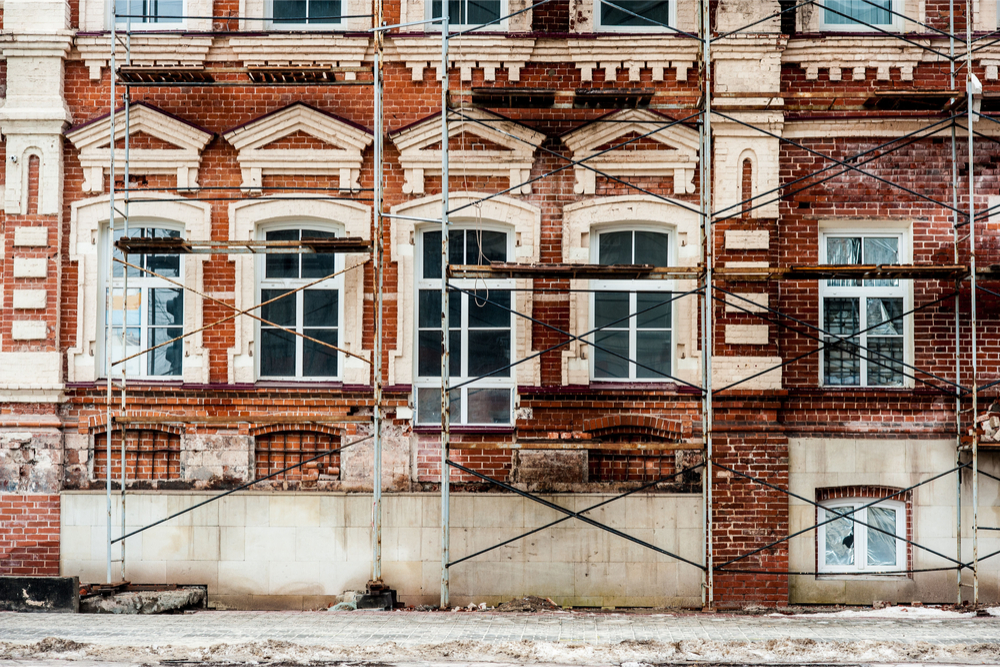Here are 5 tips to help restore historic buildings. Read on to learn more.
Building Restoration: Three Big Things to Know

With considerable changes in technology and consumer lifestyles, building construction and design is constantly being updated to meet the demands of each customer, but what happens to the older, more historic buildings in the process?
It’s inevitable that structures will age and decrease in value over time, which is a major reason why historical building restoration is booming right now in Kansas City. Historic buildings give a glimpse of a community’s past while also serving new and practical purposes. An old factory being updated to become an apartment complex, a rundown church may find new life as a restaurant, or an old office building being remodeled into a retail shop are just a few examples we continue to see a lot of.
In many ways, historical building restoration can revive a community while also allowing those same structures to hold onto their historic integrity. If you are thinking about beginning a historical restoration, here are a few things you may not have initially considered to get the ball rolling.
1. Financial Considerations
When it comes to historical restoration projects, there are quite a few costs that are established before a project even begins including most material costs.
Another financial benefit of restoring older buildings are tax credits, but this only applies to the restoration project is historic in nature and you must also meet a number of requirements. First, the property you are renovating must be certified historic by the National Park Service (usually including a paid fee) and the building must be used for an income-producing purpose and finished in a timely manner. While the amount of tax credit you may receive depends on the location of the project, some programs provide nearly 20% in tax credits on applicable structures so it may seem like a hassle at first, but for some owners, it’s worth the paperwork.
2. Restoration Standards
As we mentioned above, there are a few more guidelines you will have to meet aside from those set by the NPS. Specific to historic structures, the Secretary of the Interior determine “Standards for Rehabilitation” that pertain to historic buildings of all types and apply to the interior, exterior, and surrounding environment. All ten standards must be met to even apply for the aforementioned tax credits.
Some of these standards include only making minimal changes to the property’s defining features to retain its historic character and preserve as much of the original material as possible. Any additions that create a false history may not be made unless they have been made to increase the building’s lifespan. Any element of the building that is impossible to repair must be replaced with material that is the same as the original.
If you plan to begin a restoration project, you will want to head over to the National Park Service website for the full list and illustrated guidelines for rehabilitating historic buildings.
3. Building Codes and Regulations
Regardless of the historic nature of the project, another consideration you will want to think about is zoning requirements. While older structures may have been up to code the year they were built, those regulations could very well be out of date after sitting for 50-100 years and researching local zoning codes prior to starting the restoration process can ensure that your intended use of the structure is permissible. This process can be difficult if you aren’t completely sure what you are looking for so you may find better luck in hiring company who knows building codes and regulations.
Taking on a restoration project is a lengthy process for even the best architects, but historical buildings have quite the financial and communal payoff in the end. To ensure that you meet all of the requirements, having a qualified team of construction professionals is vital to the project’s success and will require teamwork from beginning to end.
At Camm Construction, our team has worked on historic building restoration projects in the past and can help you get your project off of the ground today.




This Post Has 0 Comments